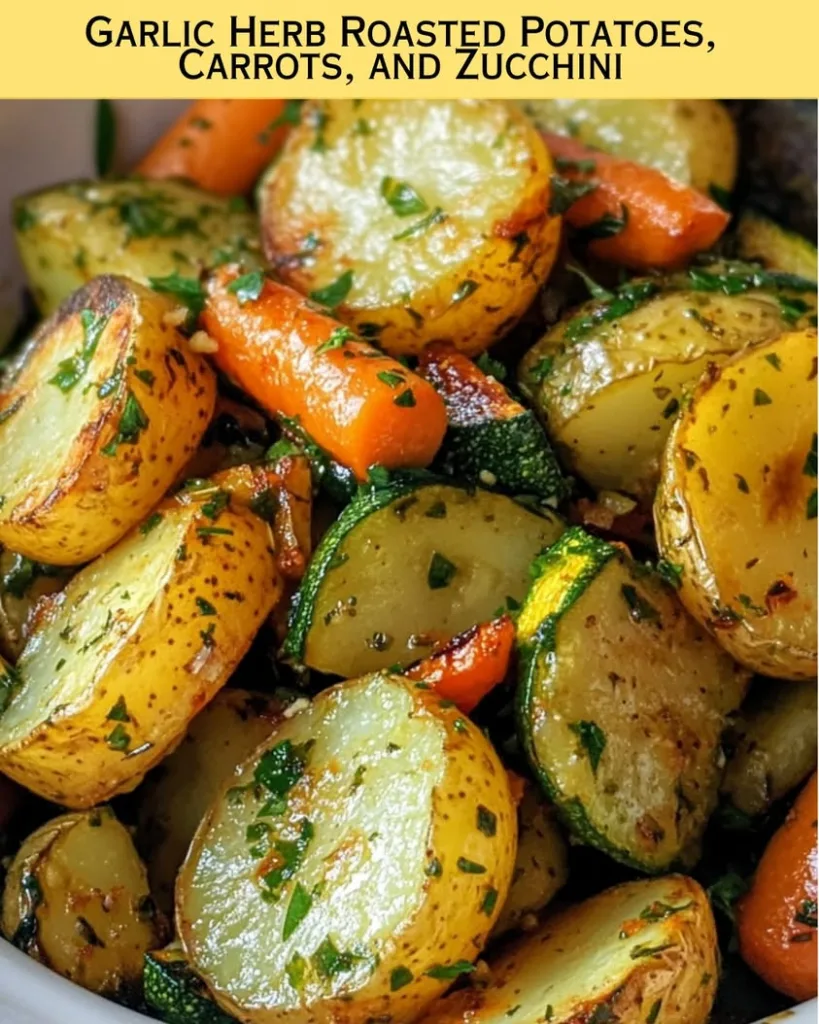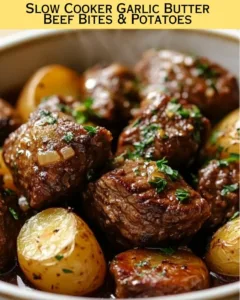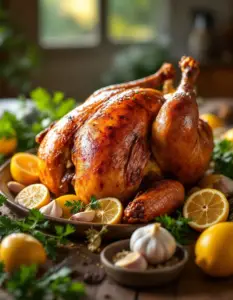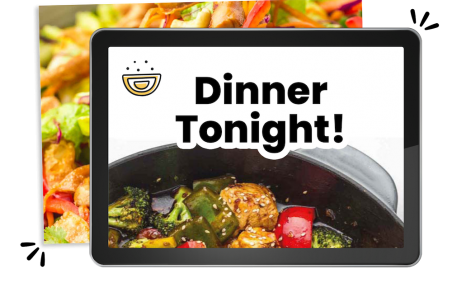Garlic Herb Roasted Potatoes, Carrots, and Zucchini: A Flavor-Packed Side Dish
Garlic Herb Roasted Potatoes, Carrots, and Zucchini is a vibrant and flavorful side dish that is perfect for any meal. The combination of tender potatoes, sweet carrots, and fresh zucchini is enhanced by the rich aroma of roasted garlic and an assortment of herbs. Together, these ingredients create a delicious medley that complements everything from roasted meats to grilled fish. This dish not only satisfies the palate but also provides a beautiful burst of color on your dining table.
Easy to prepare and visually stunning, this recipe is designed for both novice and experienced cooks alike. The simplicity of roasting vegetables allows the natural flavors to shine, providing a delightful contrast of textures—from crispy edges to soft insides. Ideal for family dinners or entertaining guests, Garlic Herb Roasted Potatoes, Carrots, and Zucchini can elevate any ordinary meal into something extraordinary.
Quick Recipe Highlights
- Flavor Profile: Enjoy a mix of savory garlic with a hint of earthiness from the herbs, balanced by the natural sweetness of roasted carrots and zucchini.
- Texture: This dish features a delightful combination of crispy roasted vegetables and tender bites, offering a satisfying eating experience.
- Aroma: The aromatic blend of garlic, rosemary, and thyme fills your kitchen, creating an inviting atmosphere as the vegetables roast.
- Visual Appeal: The vibrant colors of golden potatoes, vibrant orange carrots, and bright green zucchini create an eye-catching presentation.
- Skill Level Needed: This recipe is simple and requires minimal cooking skills, making it accessible for everyone.
- Special Equipment: A baking sheet and parchment paper are recommended for easy cleanup and even roasting.
Recipe Overview
- Difficulty Level: Easy. The steps involved are straightforward, requiring just chopping and tossing ingredients before placing them in the oven.
- Category: Side Dish. This dish pairs beautifully with a wide range of main courses, from grilled meats to vegetarian options.
- Cuisine: This dish draws on classic roasted vegetable preparations common in various culinary traditions, particularly Mediterranean.
- Cost: Affordable. Most ingredients are widely available and low-cost, making this an economical choice for meals.
- Season: Perfect year-round as it utilizes vegetables that are commonly available in every season.
- Occasion: Great for family meals, potlucks, or holiday gatherings, adding a festive touch to any occasion.
Why You’ll Love This Recipe
This Garlic Herb Roasted Potatoes, Carrots, and Zucchini recipe is not just about taste; it’s about savoring wholesome flavors that will keep you coming back for more. The garlicky richness combined with the herbal notes elevates the profile of the vegetables, turning a simple side into a star dish. The crunch from the roasted edges adds to the satisfaction with each bite, while the soft, buttery inside provides an enjoyable contrast.
The convenience factor is unbeatable. Prep can be done in just about 15 minutes, making it a quick solution for weeknight dinners. Once they’re in the oven, you can focus on preparing your main dish, allowing you to balance your kitchen duties effortlessly. These roasted vegetables pair with so many options, from classic roast chicken to flavorful vegan grain bowls, making them a staple in your recipe repertoire.
Nutritionally, this dish packs a punch. Packed with vitamins, minerals, and fiber, it contributes to a well-rounded meal that supports your health goals. Potatoes provide energy, carrots are full of beta-carotene, and zucchini adds hydration and nutrients, ensuring every serving is a boost of goodness.
Whether it’s a casual weeknight meal or an extravagant dinner party, roasted vegetables create an ambiance of warmth and hospitality. This dish is a conversation starter and often a highlight at gatherings, prompting compliments and recipe requests. Sharing the dish with loved ones enhances the dining experience, creating lasting memories around the table.
Cost-effectiveness is another benefit, as many of the ingredients can be sourced from your pantry or local farmer’s market at minimal expense. The flavors generated during roasting elevate the simplest vegetables into extraordinary fare, making it easy to enjoy delicious food without breaking the bank.
Historical Background and Cultural Significance
The origins of roasting vegetables date back centuries, rooted deeply in many culinary cultures around the world. Roasting is considered one of the oldest cooking techniques, harnessing heat sources to enhance flavors while making the most of seasonal produce. Traditionally, many cultures have utilized root vegetables, like potatoes and carrots, which store well and provide sustenance during harsher seasons.
In Mediterranean cuisines, roasted vegetables are frequently featured as side dishes or main events in themselves, showcasing the love for fresh, high-quality ingredients, such as olive oil, garlic, and herbs. Roasting elevates these humble items, emphasizing their natural sweetness with minimal intervention. The rise of farm-to-table dining has also seen a resurgence of interest in roasting vegetables, making it a popular choice in modern kitchens.
Over the years, variations of this recipe have emerged, influenced by regional tastes and available produce. From adding spices in North African cuisines to styles rich in herbs from French cooking, the essence of roasted vegetables remains a delicious, versatile option that transcends geography and time.
Traditionally, recipes for roasted vegetables have been passed down through generations, retaining the essence of family cooking while allowing room for creativity. Regional variations often provide a unique twist, ensuring that each culture adds their flair to this classic cooking technique.
Ingredient Deep Dive
Potatoes: Potatoes are a staple ingredient across the globe and hold significant cultural importance. Originating from the Andes mountains of South America, these tubers were brought to Europe in the 16th century and quickly became a dietary staple. Nutritionally, they are rich in carbohydrates, vitamins, and minerals, providing energy and supporting overall health. When selecting potatoes, look for firm skins without any blemishes or sprouts. For storage, keep them in a cool, dark place, and avoid refrigerating them as that can alter their flavor. Substitute sweet potatoes for a different taste and texture.
Carrots: Carrots have a rich history dating back thousands of years, initially cultivated for their medicinal properties. They are now celebrated for their vibrant color, sweetness, and versatility in cooking. Packed with beta-carotene, fiber, and antioxidants, carrots are a fantastic addition to any diet. When choosing carrots, select those that are firm and straight, avoiding ones that feel soft or appear shriveled. Store them in a cool, moist environment, and consider using carrot tops for pestos or salads to reduce waste. If you need a substitute, parsnips can bring a similar texture with a different flavor.
Zucchini: Zucchini, a summer squash, has roots in the Americas and is well-loved in many culinary traditions. It’s low in calories and high in water content, making it a great addition to any meal. Zucchini can be used in numerous ways, from sautéing to grilling, and works beautifully in this roasted recipe. When selecting zucchini, look for small to medium-sized squash that are firm and vibrant. Store them in the refrigerator and use within a week for the best taste. If zucchini isn’t available, yellow squash can be used as a great alternative.
Common Mistakes to Avoid
- Overcrowding the baking sheet can lead to uneven cooking; ensure the vegetables are in a single layer for optimal roasting.
- Not drying the vegetables before roasting results in steaming instead of roasting; pat them dry with paper towels.
- Using cold vegetables straight from the fridge can disrupt cooking time; allow them to come to room temperature first.
- Skipping the seasoning can lead to bland flavors; be generous with salt, pepper, and herbs.
- Not preheating the oven can lead to uneven cooking; always ensure your oven is hot before adding the vegetables.
- Ignoring the chopping size of vegetables can cause uneven cooking; aim for uniform pieces.
- Using stale herbs will diminish flavor; always opt for fresh herbs or ensure dried ones are not expired.
- Opening the oven door frequently can affect cooking temperature; try to minimize interruptions for consistent results.
- Cooking at too low of a temperature can lead to soggy vegetables; roast at a high temperature to achieve crispiness.
- Not checking on the vegetables can lead to burning; set a timer and check periodically for doneness.
Essential Techniques
Roasting: Roasting is a dry cooking method that uses hot air to elevate the flavors of vegetables while concentrating their natural sugars. To master this technique, it’s crucial to use a high heat, which creates a crispy exterior while maintaining a tender inside. A common pitfall is overcrowding the pan, which can lead to steaming instead of roasting. Look for a golden brown hue and caramelization as visual cues of success.
Chopping: The size and shape of your vegetable cuts greatly affect cooking time and texture. Mastering even chopping ensures consistent cooking. A common mistake is cutting too large, leading to undercooked pieces. Aim for uniform pieces that are about 1 to 2 inches in size to achieve even results. Use a sharp knife for better control, and a cutting board for safety and ease.
Pro Tips for Perfect Garlic Herb Roasted Potatoes, Carrots, and Zucchini
1. Always preheat your oven and get it hot enough—around 425°F (220°C) is ideal for crispy veggies.
2. Experiment with different herbs, such as thyme or oregano, to complement your favorite flavors.
3. Add a splash of balsamic vinegar before serving for an extra layer of flavor.
4. Use a mixture of root vegetables for variety, including beets or turnips if you’re adventurous.
5. For extra crunch, broil the vegetables for the last 2-3 minutes of cooking.
6. Season after roasting with a sprinkle of fresh herbs and squeeze of lemon for brightness.
7. Make sure to cut your vegetables into equal sizes to ensure they cook evenly.
8. Try adding garlic cloves whole and unpeeled for a sweeter, mild flavor.
Variations and Adaptations
Regional variations can provide a refreshing twist on the classic recipe. Consider adding Mediterranean elements like olives and feta for a Greek-inspired dish. Seasonal adaptations such as including butternut squash in the fall or asparagus in spring can keep this recipe relevant year-round. For dietary modifications, swap olive oil for avocado oil in a keto version or replace the vegetables with cauliflower for a low-carb option. Additionally, flavor variations like incorporating a spice blend can add a kick, while presentation alternatives such as serving in a colorful bowl can enhance visual appeal.
Serving and Presentation Guide
Presentation can elevate your Garlic Herb Roasted Potatoes, Carrots, and Zucchini to gourmet status. Arrange them artfully on a large platter, allowing the vibrant colors to contrast. Consider the use of fresh herbs as a garnish, adding not only beauty but also freshness to the presentation. Serve with dips like hummus or tzatziki on the side for added flavor. Temperature-wise, this dish is best enjoyed hot or warm, ensuring that the textures remain intact and delightful, offering an enjoyable experience with every bite.
Wine and Beverage Pairing
For wine pairings, a refreshing Sauvignon Blanc complements the flavors of the roasted vegetables beautifully, enhancing the freshness from the herbs. Alternatively, a light Pinot Grigio can offer a nice contrast to the sweetness of the carrots. If you prefer non-alcoholic options, try a sparkling water infused with lemon; it balances the dish well. Coffee lovers can enjoy a rich dark roast, reminiscent of the depth and earthiness in roasted dishes, rounding out a complete dining experience. Always serve your drinks chilled to maintain their refreshing qualities alongside your hearty dish.
Storage and Shelf Life
To store, allow the roasted vegetables to cool, then place them in an airtight container in the refrigerator, where they can last up to 3 days. If you need to save them for a longer period, consider freezing them; however, note that texture may change. For reheating, use the oven to maintain crispness or microwave for convenience, but be aware that the latter may lead to a softer texture. To identify spoilage, watch for discoloration or smells; if noticed, dispose of the vegetables to ensure food safety.
Make Ahead Strategies
For those busy nights, consider prepping your vegetables in advance. Chop potatoes, carrots, and zucchini up to a day before and store them in water in the fridge to prevent browning. Season and toss with herbs just before roasting for maximum flavor. This strategy allows you to enjoy fresh-roasted vegetables without extensive preparation time. If you have leftovers, they can be added to salads or grain bowls the next day, reducing waste, and maintaining a wholesome diet.
Scaling Instructions
If you’re looking to halve the recipe, simply cut all ingredient amounts in half while keeping the same cooking instructions and time adjustments. If you wish to double or triple, make sure to use larger pans and possibly increase cooking time, so all vegetables have enough space to roast evenly. Keep in mind that vegetables may need additional cooking time in larger batches. Always adjust seasonings according to your taste preferences, as these can change with increased quantities.
Nutritional Deep Dive
A macro breakdown reveals that this dish is primarily composed of carbohydrates from the vegetables, with healthy fats if using olive oil. Each serving provides a variety of vitamins, including Vitamin A from carrots and Vitamin C from zucchini, essential for immune support and skin health. Consider analyzing micronutrients to ensure you’re meeting dietary needs. For those monitoring calorie intake, this side dish provides substantial flavor without excessive calories, ideal for weight management strategies.
Dietary Adaptations
This recipe can be easily modified to suit various dietary needs. For a gluten-free version, no adjustments are necessary as it is naturally gluten-free. Making it dairy-free is as simple as skipping cheese garnishes. To create a vegan adaptation, simply ensure no animal-based stock is used in the preparation. For a low-carb alternative, replace potatoes with cauliflower, and for keto enthusiasts, reduce the potato count significantly to keep net carbs low. Each modification retains the fundamental flavors while accommodating specific dietary requirements.
Troubleshooting Guide
If your roasted vegetables turn out soggy instead of crispy, ensure you’re using a high temperature and that the pan is not overcrowded. If flavors seem off balance, consider adjusting seasoning after roasting and adding a splash of acid to brighten taste. Temperature problems can arise if the oven hasn’t preheated sufficiently. For ingredient substitutions, if you’re lacking zucchini, consider using yellow squash, which provides a similar texture with a unique flavor twist. Timing concerns can be addressed by keeping an eye on the vegetables, checking for tenderness regularly.
Recipe Success Stories
Our community has shared an array of feedback showcasing their delightful experiences with Garlic Herb Roasted Potatoes, Carrots, and Zucchini. From variations that incorporate different root vegetables to festive adaptations for holiday gatherings, the versatility shines in every kitchen. Many readers have reported great success at potlucks, prompting requests for recipe cards to share with friends. Contributing ideas for garnishing and presentation have brought creativity to the basic recipe. The satisfaction of experimenting and sharing culinary outcomes has enriched our cooking community.
Frequently Asked Questions
Can I use frozen vegetables for this recipe?
Using frozen vegetables can lead to mushiness, as they contain more moisture than fresh ones. For best results, opt for fresh, in-season vegetables.
How do I prevent the vegetables from burning?
To prevent burning, monitor your vegetables closely while they roast, and add them to the oven only after it has fully preheated. Stir them halfway through cooking for even browning.
Can I add other vegetables to this mix?
Absolutely! You can enhance the dish with other vegetables such as bell peppers, asparagus, or even Brussels sprouts, adjusting the cooking time as necessary for each type.
What should I serve this dish with?
This side dish pairs wonderfully with grilled chicken, roasted pork, or as part of a vegetarian feast, making it a versatile choice for all types of meals.
Can I make this meal ahead of time?
You can prepare the vegetables in advance, store them in the refrigerator, and roast just before serving. This keeps the flavors fresh and vibrant.
What type of oil is best for roasting?
Olive oil is a great choice for roasting due to its flavor and health benefits. However, feel free to experiment with avocado oil for a higher smoke point.
How do I know when the vegetables are done?
The veggies are done when they are golden brown and fork-tender. A good visual cue is caramelization on the edges.
Can I store leftovers?
Yes, store leftover roasted vegetables in an airtight container in the refrigerator for up to 3 days. They can be reheated or used in salads.
Are there any dairy-free options for this recipe?
This recipe is naturally dairy-free; just avoid adding any cheese or cream when serving. The flavors stand strong on their own.
How can I spice this recipe up?
Add chili flakes, smoked paprika, or your favorite spice blend to give the dish an extra kick. Toss in fresh herbs after roasting for added flavor depth.
Additional Resources
For more delicious recipes, check out our collection of vegetable side dishes that embrace seasonal ingredients. Explore our technique guides that delve into roasting, sautéing, and seasoning, ensuring you’re equipped with the skills to create stunning meals. Ingredient information helps you understand more about the vegetables you’re using, enhancing your culinary knowledge. Lastly, our recommendations for kitchen equipment will ensure you have everything you need for seamless cooking experiences.
Join the Conversation
We’d love to hear your thoughts! Share your photos of Garlic Herb Roasted Potatoes, Carrots, and Zucchini on social media, tagging us with your delightful experiences. Your feedback inspires our community and gives us ideas for future recipes and blog topics. Join the conversation by leaving your reviews and suggestions—what ingredients did you add? What variations did you create? Let’s celebrate the joy of cooking together!
The Recipe
Garlic Herb Roasted Potatoes, Carrots, and Zucchini
Serves: 4 servings
Prep Time: 15 mins
Cook Time: 30 mins
Total Time: 45 mins
Kitchen Equipment Needed
- Baking sheet
- Parchment paper (optional)
- Sharp knife
- Cutting board
- Mixing bowl
- Spatula or tongs
Ingredients
- 4 medium potatoes, diced
- 2 large carrots, sliced
- 2 medium zucchinis, sliced
- 4 cloves garlic, minced
- 2 tablespoons olive oil
- Salt and pepper, to taste
- 1 teaspoon dried rosemary
- 1 teaspoon dried thyme
- Optional: fresh herbs for garnish
Directions
- Preheat the oven to 425°F (220°C) and line a baking sheet with parchment paper.
- In a large mixing bowl, combine diced potatoes, sliced carrots, and zucchini. Drizzle with olive oil.
- Add minced garlic, rosemary, thyme, salt, and pepper. Toss until vegetables are well-coated.
- Spread the mixture onto the prepared baking sheet in a single layer.
- Roast in the preheated oven for 25-30 minutes, or until the vegetables are golden and fork-tender, stirring halfway through.
- Remove from the oven and let cool slightly before garnishing with fresh herbs, if desired.
- Serve hot as a delicious side dish!
Recipe Notes
- This recipe is easily adaptable; feel free to add other vegetables or spices as you like!
- If using different root vegetables, adjust the cooking time according to their density.
- Leftovers can be stored in the fridge and make a great addition to salads, or reheated as a side.










